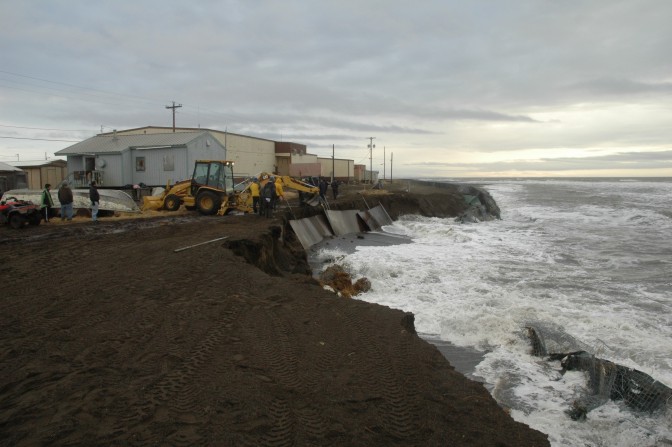Kivalina – Climate Change’s Next Victim
Whenever a debate starts up about whether us dirty humans are influencing global temperatures I always make myself scarce. Many people roll head long into the fray with their verbal fists flying, but I’m happy to admit that I don’t know what’s going on and why. And neither do you. If top climatologists can’t decide whether we have ruined the atmosphere to such an extent that our blue ball is over heating, I certainly can’t either.
What does seem to have been generally agreed is that the atmosphere is warming up. It may be part of the world’s normal meteorological cycle, or it may be man made, or both, or something else. Whatever the true cause is, there is one small town that’s feeling the full force of it – Kivalina, Alaska.
Kivalina is plonked on the southern tip of a 7.5 mile long barrier island in NW Alaska. It houses around 400 people (374 in 2010 census) most of which are of an indigenous Inuit tribe – the Inupiat. In colder times their long shore line was protected by thick winter pack ice. Now the ice is much thinner during winter, their shores are open to a battering during autumn and winter storms. So as the ice melts, the water rises and the erosion worsens.
The US Army Corps of Engineers built defences in 2008 but they were always just a plaster on a gushing wound. Predictions are that Kivalina will be completely uninhabitable by 2025. Official figures say that North West Alaska is warming up twice as quickly as the rest of the US of A.
The locals are going to have to relocate, that much is clear, but they’re more than a little miffed about it. The cost is predicted to be around $400 million and the locals are jazzed off because they believe it’s due to a global problem they did nothing at all to create. You would be annoyed wouldn’t you? A small population basically gets a bill for millions of dollars because the fat cats wanted to sell their oil to ensure their waste-lines continued to swell.
Click here to read about Kiribati, an island nation facing global warming troubles too.
They feel this so strongly that in 2010 they attempted to sue 24 of the world’s biggest oil companies including Shell and Exxon. They lost on the grounds that emissions are a political issue, not a legal one. They appealed in 2012 but lost again. Sadly that won’t come as a surprise to anyone.
All the people of Kivalina can do now is keep searching for an alternative site. The population is 96.55% native american, and I wonder if funding and help may have been more forthcoming if that percentage were white? Just saying.
MORE ENVIRONMENTAL STORIES
ENVIRONMENTALLY SOUND MOSS GRAFFITI
RIVER DOLPHINS ARE ON THE DECLINE
PREDICITING WEATHER BY CLOUD GAZING

























